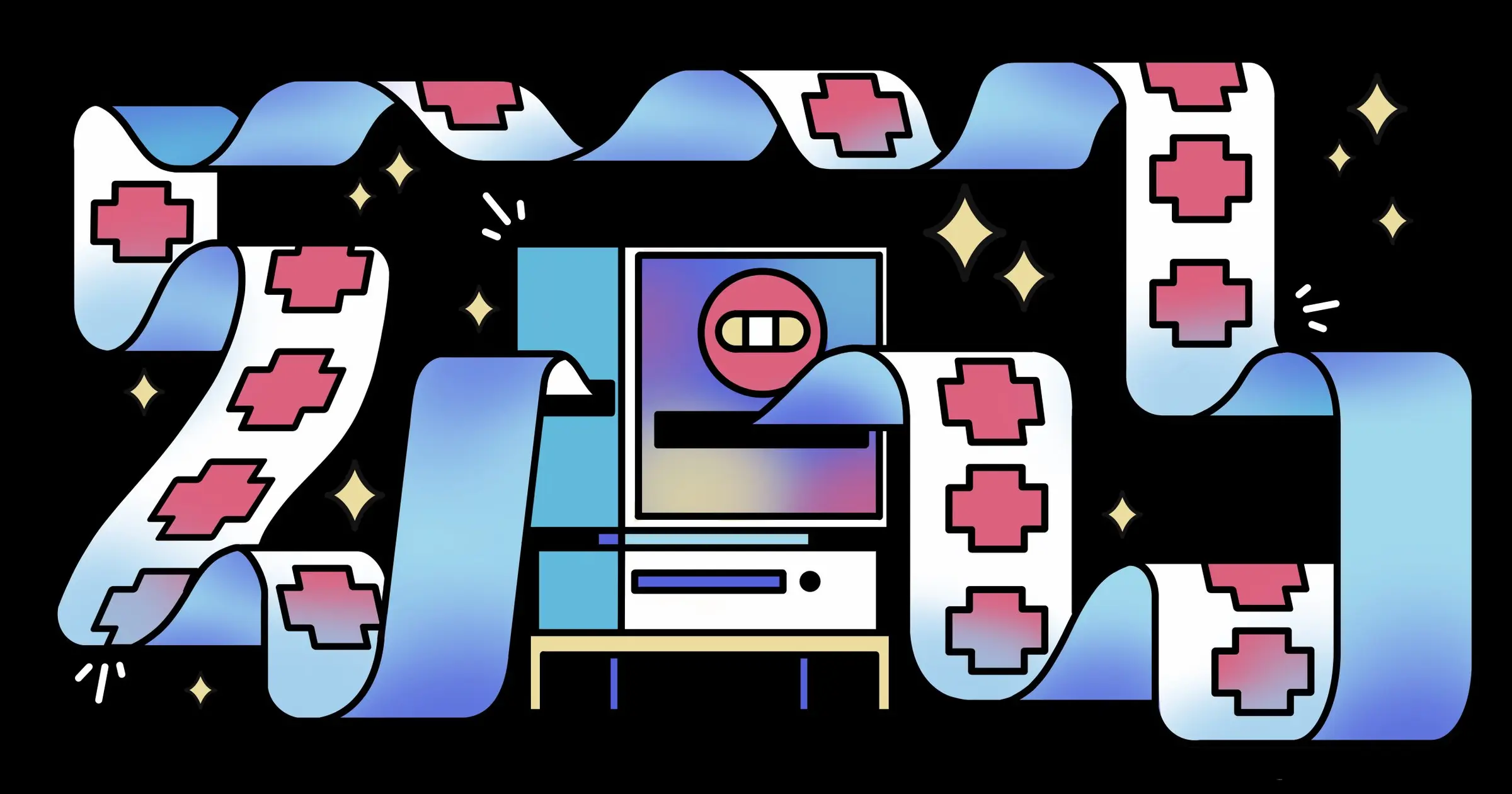Self-Healing Code: The Future of Software Development
Imagine a world where software glitches vanish before you even notice them. No more system crashes interrupting your workflow, no more error messages causing frustration. Self-healing code is the future of software development, promising programs that act like self-repairing machines. In an age where we depend on software for everything from daily tasks to critical operations, reliability is paramount. It offers a revolutionary approach, making software more resilient and user-friendly than ever before. Let’s delve into this fascinating concept and explore how it can transform the way we interact with technology.
What is Self-Healing Code?

Imagine a tireless guardian constantly monitoring your software, ever-vigilant against malfunctions. This guardian isn’t a person, but rather the essence of self-healing code. Unlike traditional software that relies on you to identify and troubleshoot problems, it takes a proactive approach. It acts as a built-in doctor, automatically detecting, diagnosing, and even repairing errors or malfunctions without needing human intervention.
Think of it like the human immune system. Self-healing code constantly monitors the program’s health, identifying potential issues like malfunctioning components, resource depletion, or unexpected data inputs. Just as the immune system triggers specific responses to different threats, it has pre-programmed repair mechanisms. These can involve restarting services, rerouting requests to healthy components, or utilizing backup data to restore functionality.
But self-healing code doesn’t stop there. It incorporates a third crucial element: continuous learning. By analyzing past experiences and repair actions, the code can refine its detection and repair strategies over time. This ongoing process allows the software to become increasingly adept at handling unforeseen issues and maintaining optimal performance.
How Does Self-Healing Code Work?
Self-healing code functions like a well-oiled machine, with three key components working in concert: error detection, automated repair, and continuous learning. Let’s delve into each component and explore how they contribute to the magic of self-healing software:
1. Error Detection
The first line of defense is a robust error detection system. This involves constantly monitoring the software’s health using various tools and techniques. Think of it like having a network of sensors that provide real-time feedback on the system’s performance. Here are some common approaches:
- Monitoring Tools: Specialized software constantly tracks system metrics like resource usage (CPU, memory), response times, and error logs. Deviations from normal operating ranges or spikes in errors trigger alerts.
- Predefined Thresholds: These are critical values set for various metrics. When a metric crosses a threshold (e.g., CPU usage exceeding 80%), the system recognizes it as a potential problem.
- Self-Checks: Well-written code can include self-checking routines that identify internal inconsistencies or invalid data. This allows the code to catch issues before they escalate into major malfunctions.
2. Automated Repair
Once an error is detected, self-healing code doesn’t simply raise an alarm; it takes action. The pre-programmed repair mechanisms intervene to restore functionality with minimal disruption. Here are some examples of automated repair strategies:
- Restarting Services: When a service malfunctions, the code can automatically restart it. This often resolves temporary glitches and gets the service back on track.
- Rerouting Requests: If a critical component fails, the code can reroute requests to healthy backups or alternative resources. This ensures uninterrupted service even when parts of the system experience problems.
- Data Recovery from Backups: In case of data corruption or loss, self-healing code can utilize pre-existing backups to restore the data and maintain system integrity.
3. Continuous Learning
Self-healing code doesn’t operate in a vacuum. The system continuously learns from its experiences to improve its effectiveness over time. Here’s how this learning process works:
- Data Collection: During operation, the code gathers data on detected errors, repair actions taken, and the resulting system behavior.
- Analysis of Results: This data is analyzed to understand the effectiveness of different repair strategies. Were issues resolved successfully? Did any repairs cause unintended consequences?
- Adaptation of Strategies: Based on the analysis, the code can dynamically adjust its repair mechanisms. This allows it to prioritize more successful repair methods and avoid actions that may have caused problems in the past.
This continuous learning loop allows autonomous repairing to become increasingly sophisticated over time. It can adapt to new types of errors and become more efficient in resolving them, making the software more resilient and reliable in the long run.
Benefits of Self-Healing Code

Self-healing code offers a compelling set of advantages for both developers and users of software. Let’s explore these benefits in detail:
For Developers:
- Reduced Downtime and Maintenance Costs: Imagine a world where system crashes and errors become a thing of the past. Self-healing code automatically detects and resolves issues, minimizing downtime and the need for manual intervention. This translates to significant cost savings for developers and IT teams who would otherwise be troubleshooting and fixing problems.
- Improved System Reliability and Performance: Self-healing code proactively identifies and addresses potential issues before they escalate into major problems. This leads to a more stable and reliable system with fewer interruptions and improved overall performance.
- Simplified Development and Management: By automating error detection and repair, autonomous repairing reduces the complexity of software development and management. Developers can focus on creating new features and functionalities without getting bogged down in constant maintenance tasks.
For Users:
- Enhanced User Experience: With self-healing code at the helm, users experience a smoother and more reliable interaction with the software. Reduced downtime and fewer disruptions ensure a seamless user experience, minimizing frustration and improving overall satisfaction.
- Increased System Availability: Self-healing code aims to keep the system operational as much as possible. This translates to increased availability for users, allowing them to access and utilize the software functionality whenever needed.
- Improved Scalability and Resilience: As autonomous repairing code adapts and learns, the software becomes more robust and adaptable to changing demands. This allows the system to scale efficiently and handle unexpected surges in traffic or workload without compromising performance.
Additional Benefits:
- Enhanced Security: Autonomous repairing code can be programmed to detect and respond to potential security threats. This proactive approach can help mitigate vulnerabilities and prevent cyberattacks.
- Faster Recovery from Failures: When an error does occur, Autonomous repairing code can react swiftly and automatically initiate repairs. This minimizes the impact of failures and ensures a faster recovery time, getting the software back on track with minimal disruption.
In essence, self-healing code represents a paradigm shift in software development. By automating critical tasks like error detection and repair, it empowers developers to build more reliable and user-friendly software that delivers exceptional performance and a consistently positive user experience.
Challenges and Considerations

While self-healing code offers a plethora of benefits, it’s not without its challenges. Here are some key considerations developers need to address when implementing this technology:
- Increased Development Complexity: Designing and implementing self-healing mechanisms adds an extra layer of complexity to the development process. Developers need to consider potential error scenarios, define appropriate repair strategies, and ensure the code itself functions flawlessly.
- Potential for Unintended Consequences: Automated repair actions, while well-intentioned, can sometimes lead to unforeseen consequences. Thorough testing and careful design of repair mechanisms are crucial to minimize the risk of introducing new issues while attempting to fix existing ones.
- The Importance of Robust Error Detection and Repair: The effectiveness of self-healing code hinges on its ability to accurately detect errors and implement the right repairs. False positives (mistaking normal behavior for errors) and false negatives (failing to detect real problems) can significantly undermine the system’s reliability.
- Transparency and Explainability: As self-healing code becomes more sophisticated, it’s essential to maintain transparency and explainability in its decision-making processes. Developers need to ensure they understand how the code identifies and repairs issues, allowing for better monitoring and intervention when necessary.
- Ethical Considerations: As with any powerful technology, ethical concerns need to be addressed. Who is responsible for unintended consequences caused by automated repairs? How can we ensure self-healing code doesn’t introduce biases or discriminate against certain users? Open discussions and ethical frameworks are crucial as this technology evolves.
These challenges shouldn’t deter us from exploring the potential of self-healing code. With careful design, rigorous testing, and a focus on responsible development, these hurdles can be overcome. The future of software development lies in creating self-aware and adaptable systems, and it represents a significant step forward on that path.
The Future of Self-Healing Code
Self-healing code is not a distant utopia; it’s an actively evolving field with exciting advancements on the horizon. Here’s a peek into what the future holds for this transformative technology:
- Integration with Artificial Intelligence (AI): AI holds immense potential to enhance self-healing capabilities. Machine learning algorithms can analyze vast amounts of data to identify complex patterns and predict potential issues before they occur. This can further refine error detection and enable self-healing code to make more informed decisions about repair strategies.
- Autonomous Systems and Self-Optimization: As self-healing code matures, it could pave the way for truly autonomous systems. These systems would not only heal themselves but also continuously optimize performance and functionality based on changing needs and real-time data analysis.
- The Democratization of Self-Healing Code: Currently, implementing self-healing mechanisms requires specialized knowledge and expertise. Future advancements may involve tools and frameworks that make it easier for developers of all skill levels to integrate self-healing features into their software.
- Widespread Adoption Across Industries: The benefits of self-healing code extend far beyond traditional software applications. It has the potential to revolutionize critical infrastructure, medical devices, and even autonomous vehicles. As the technology matures and trust builds, we can expect wider adoption across various industries.
The future of software development is undoubtedly shaped by self-healing code. This technology promises to usher in an era of highly reliable, adaptable, and user-centric software that empowers developers and delivers exceptional experiences for users. As advancements continue, self-healing code has the potential to redefine the way we interact with technology and pave the way for a more autonomous and resilient digital world.
Conclusion
Wave goodbye to software meltdowns forever! Self-healing code empowers your applications with built-in resilience, keeping them user-friendly and frustration-free. ONextDigital’s expertise in Web Development Service and White Label Software Service can help you harness this future-proof technology. Imagine the possibilities – software that heals itself, just like your body! Contact us today and build software with a built-in band-aid. Let ONextDigital help your applications become more robust and self-sufficient, freeing you to focus on what matters most – innovation.




